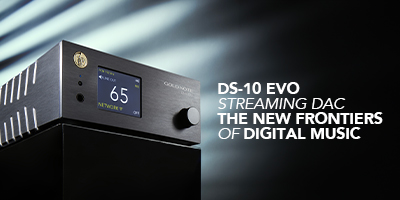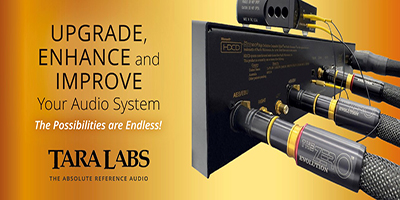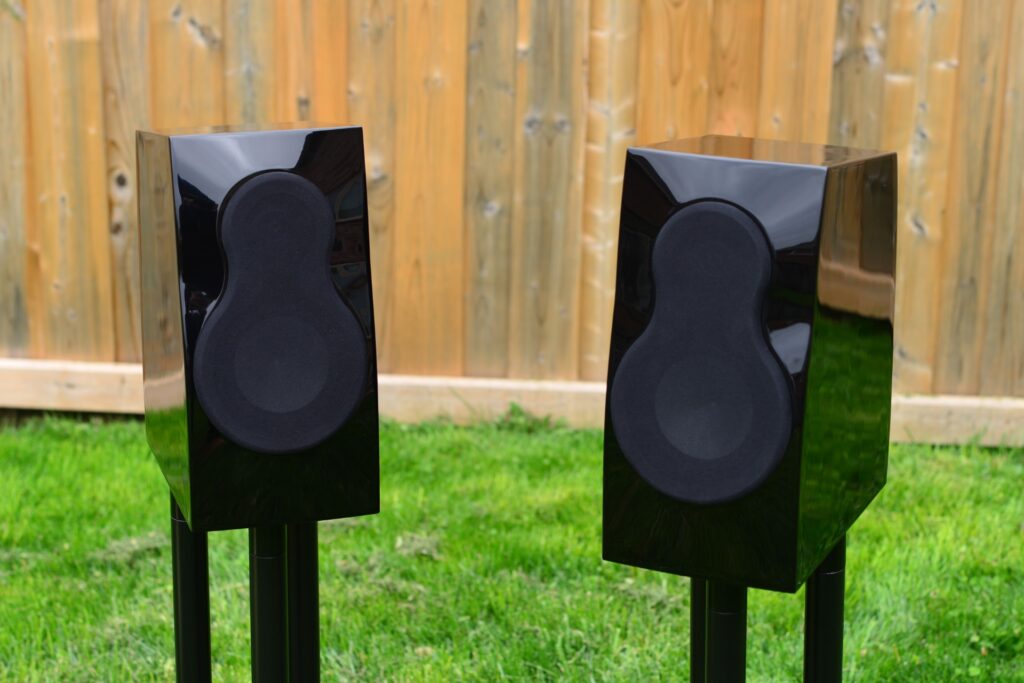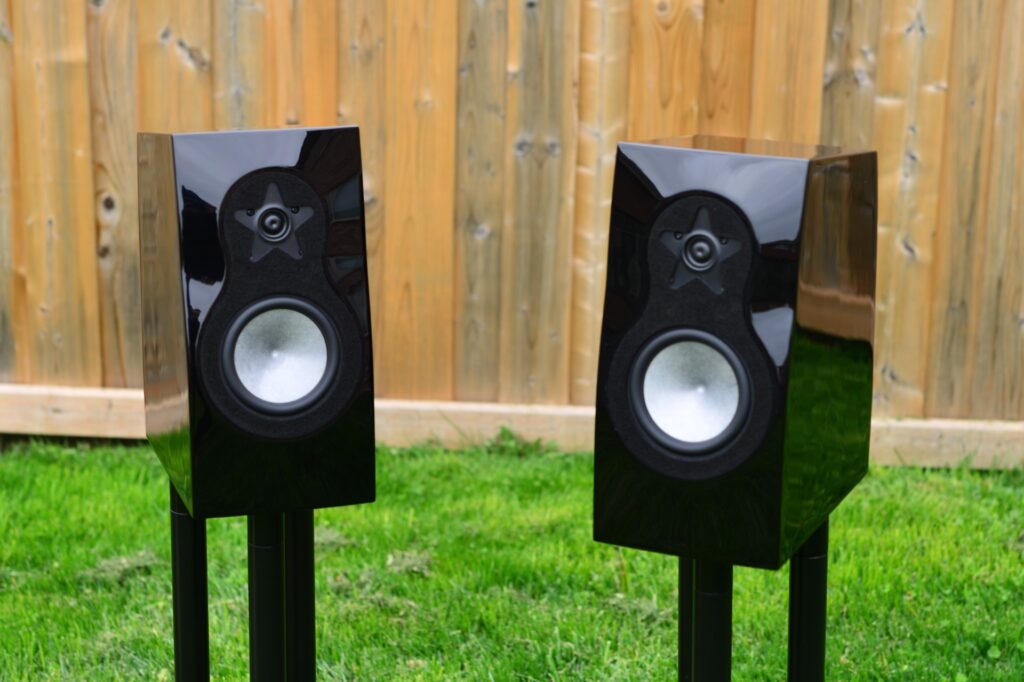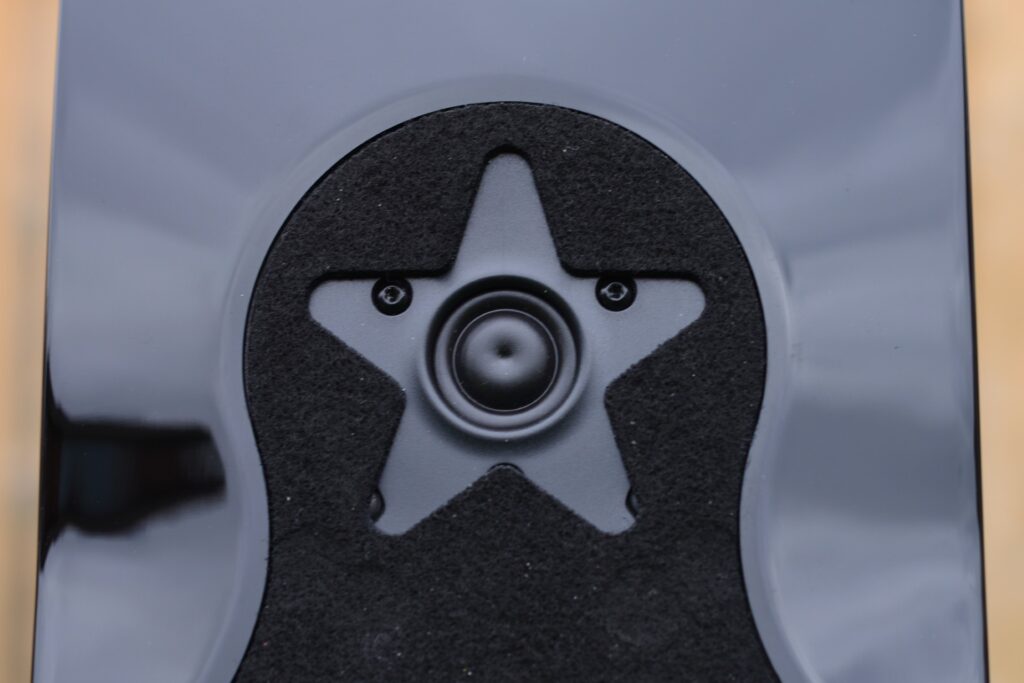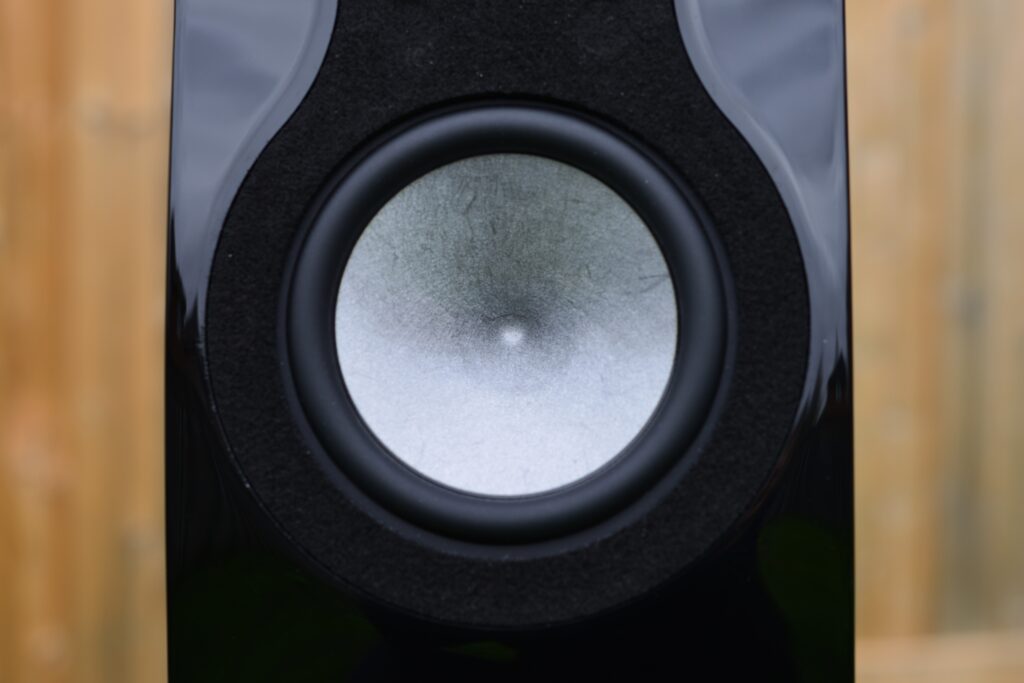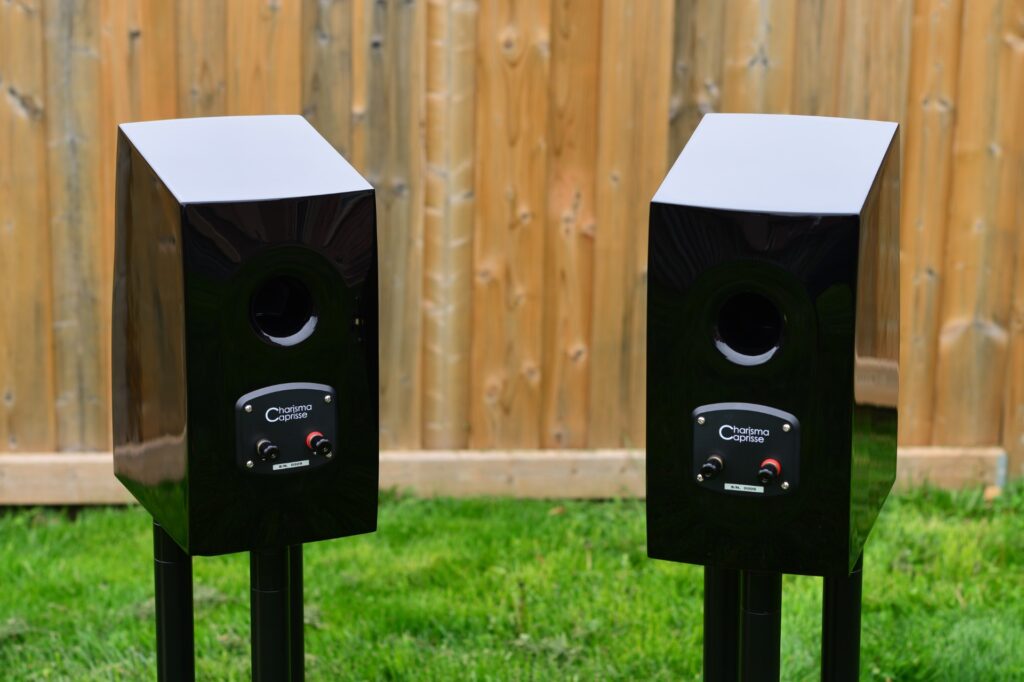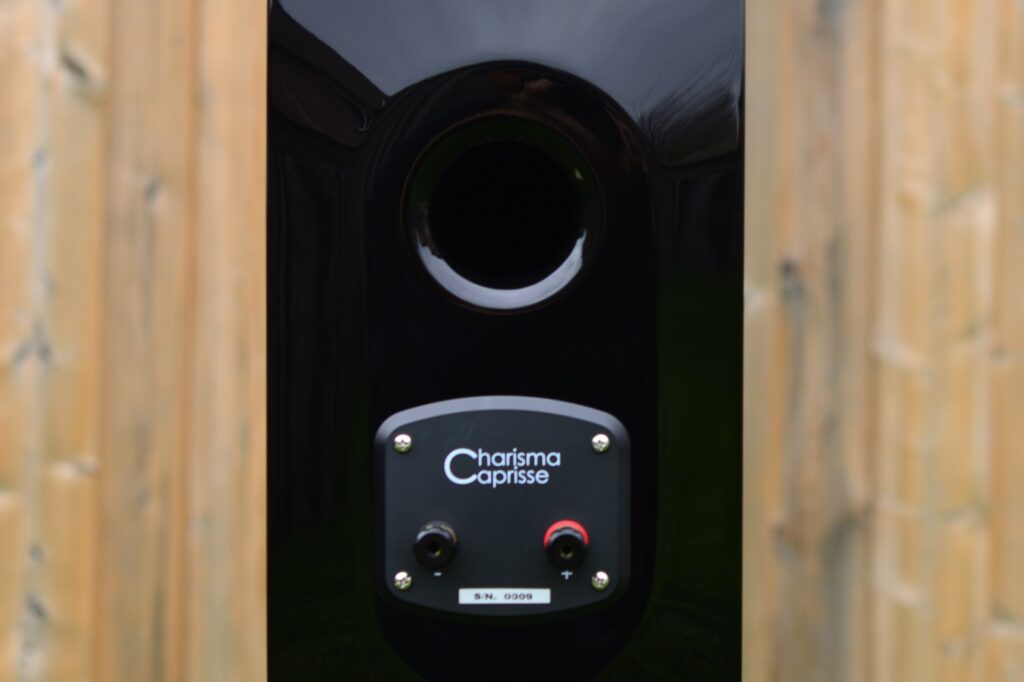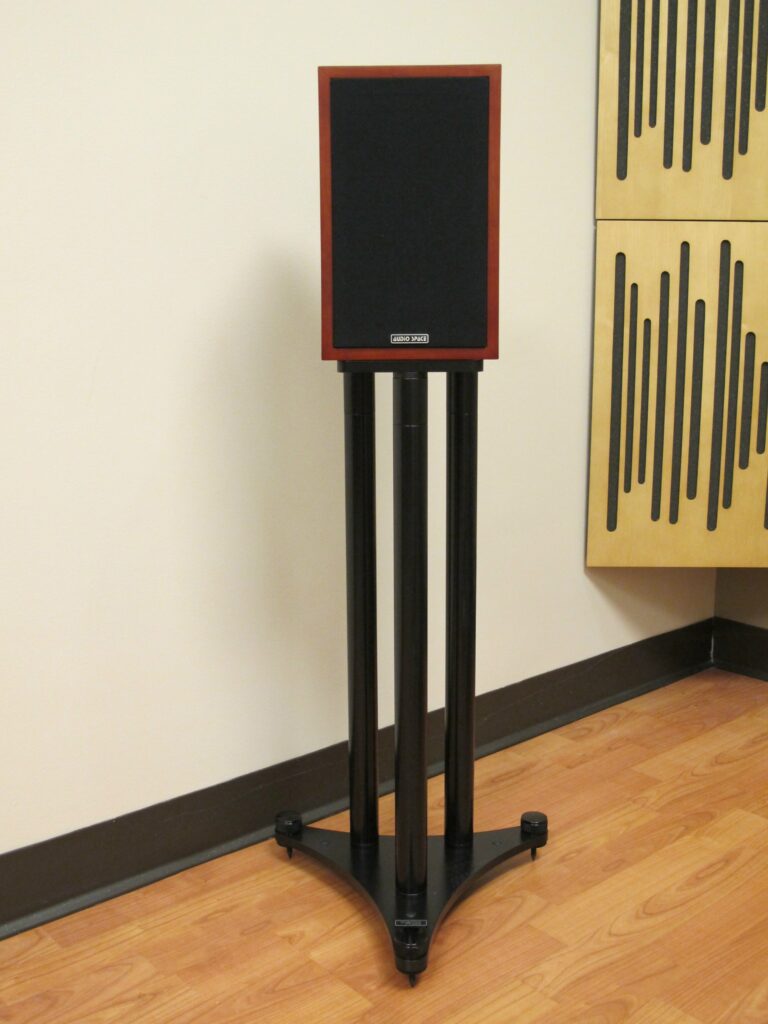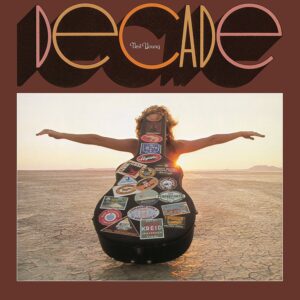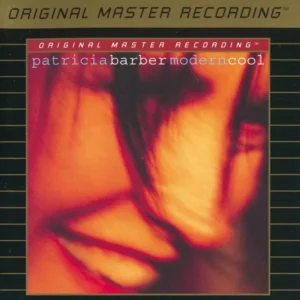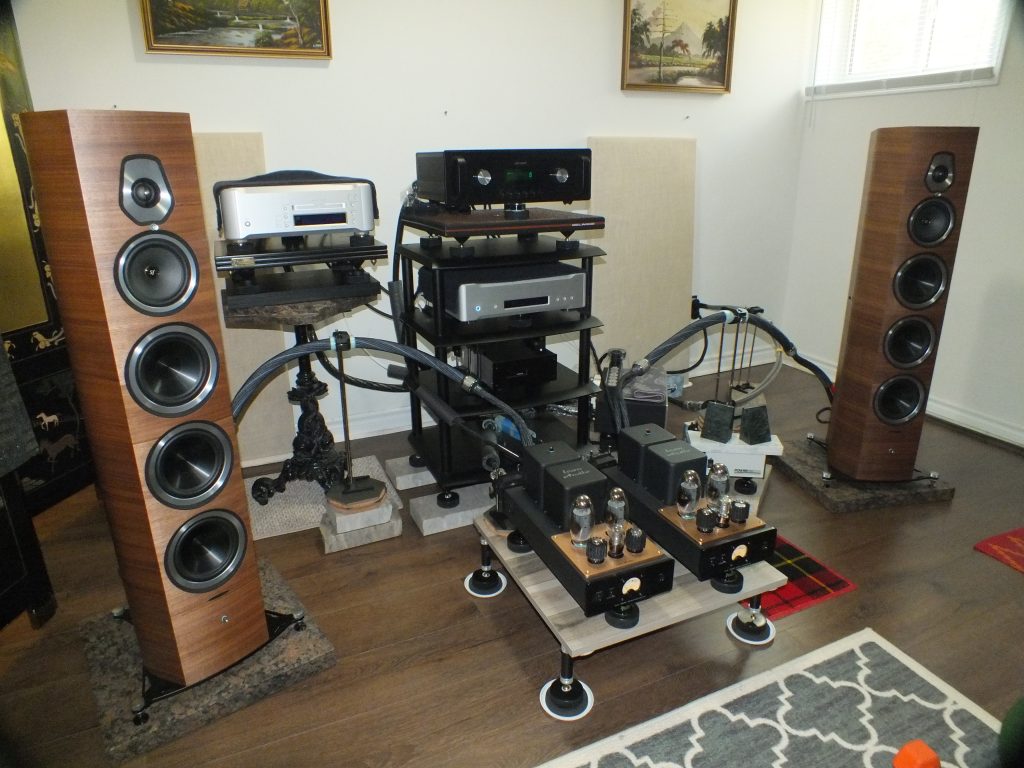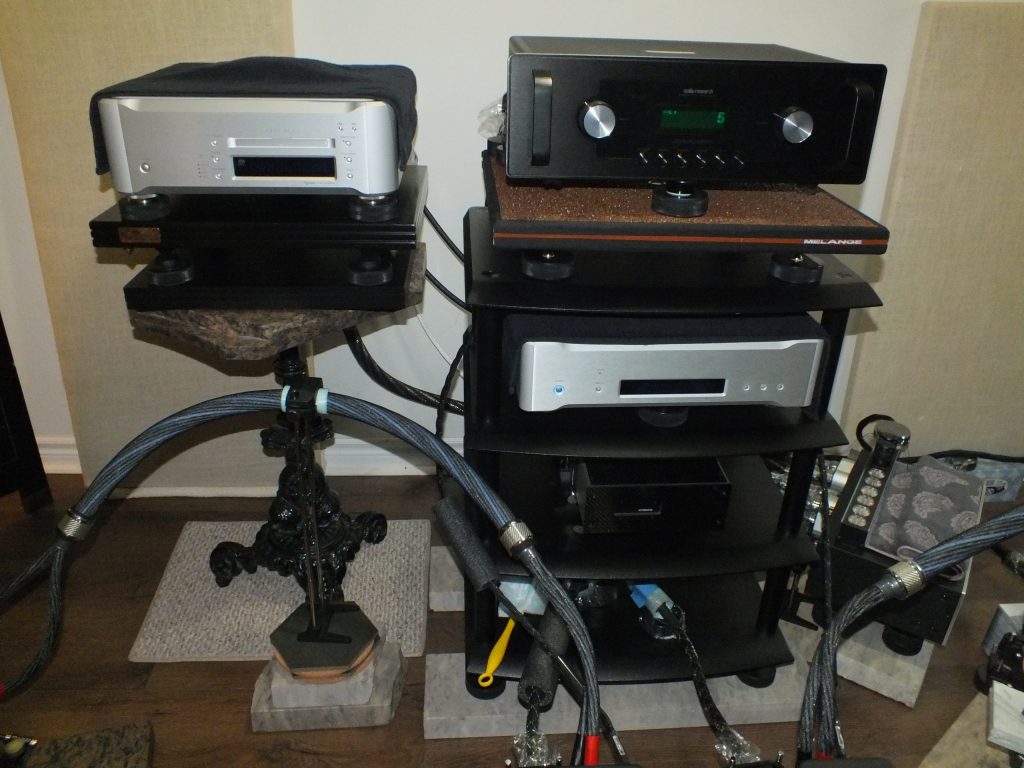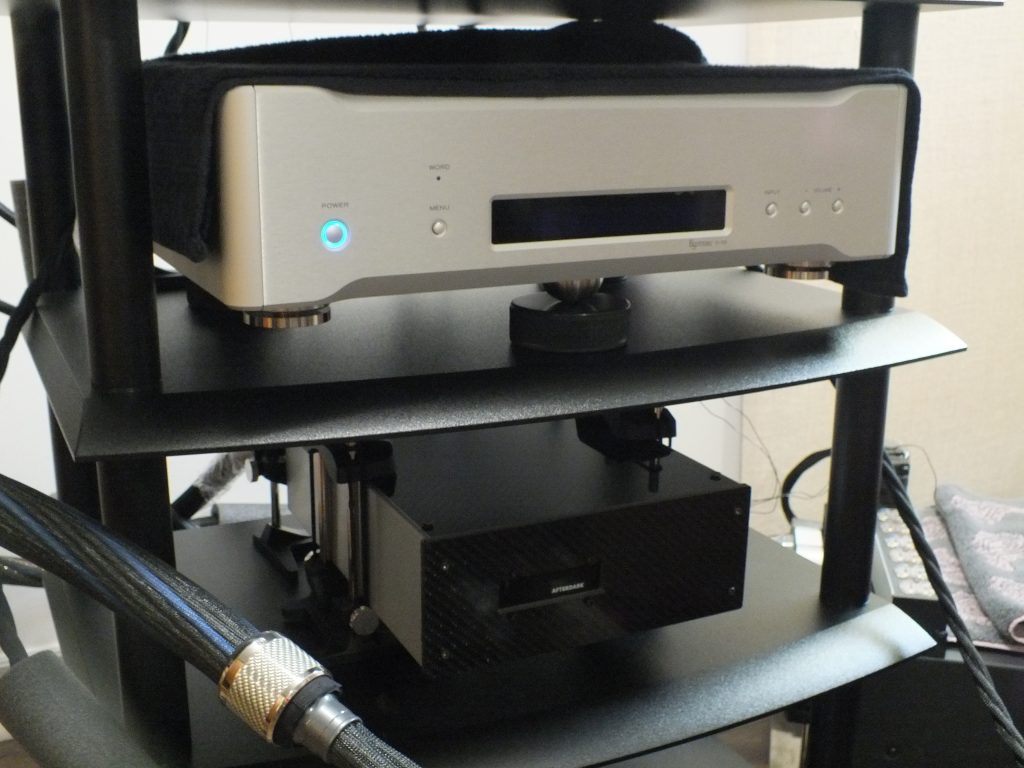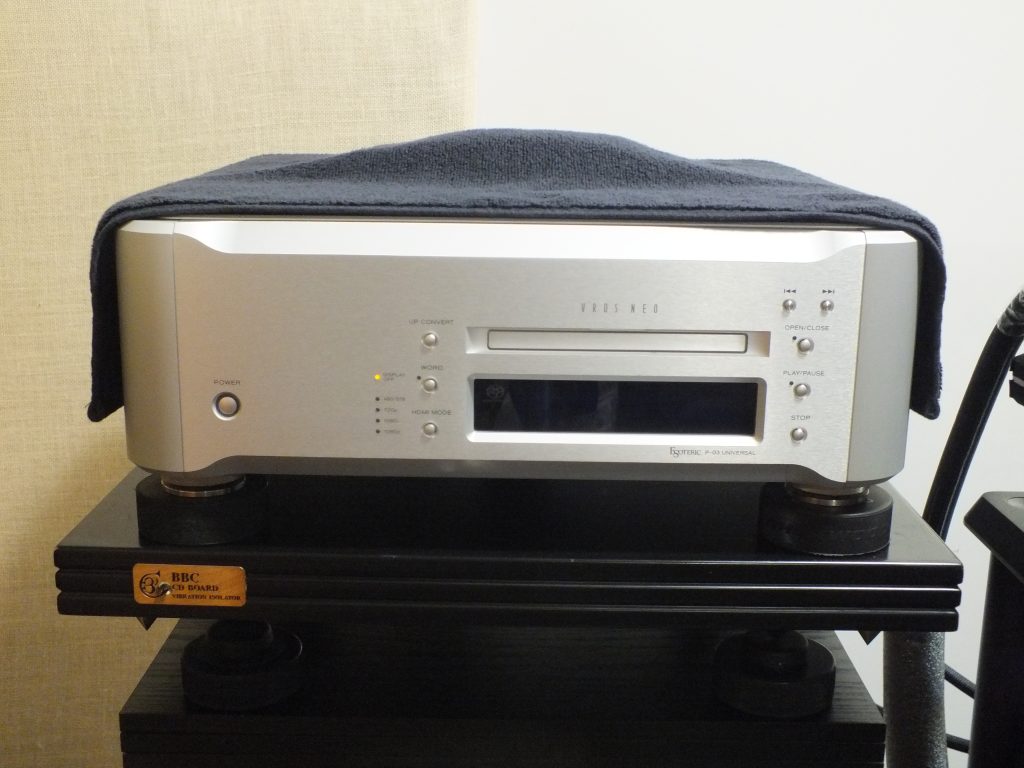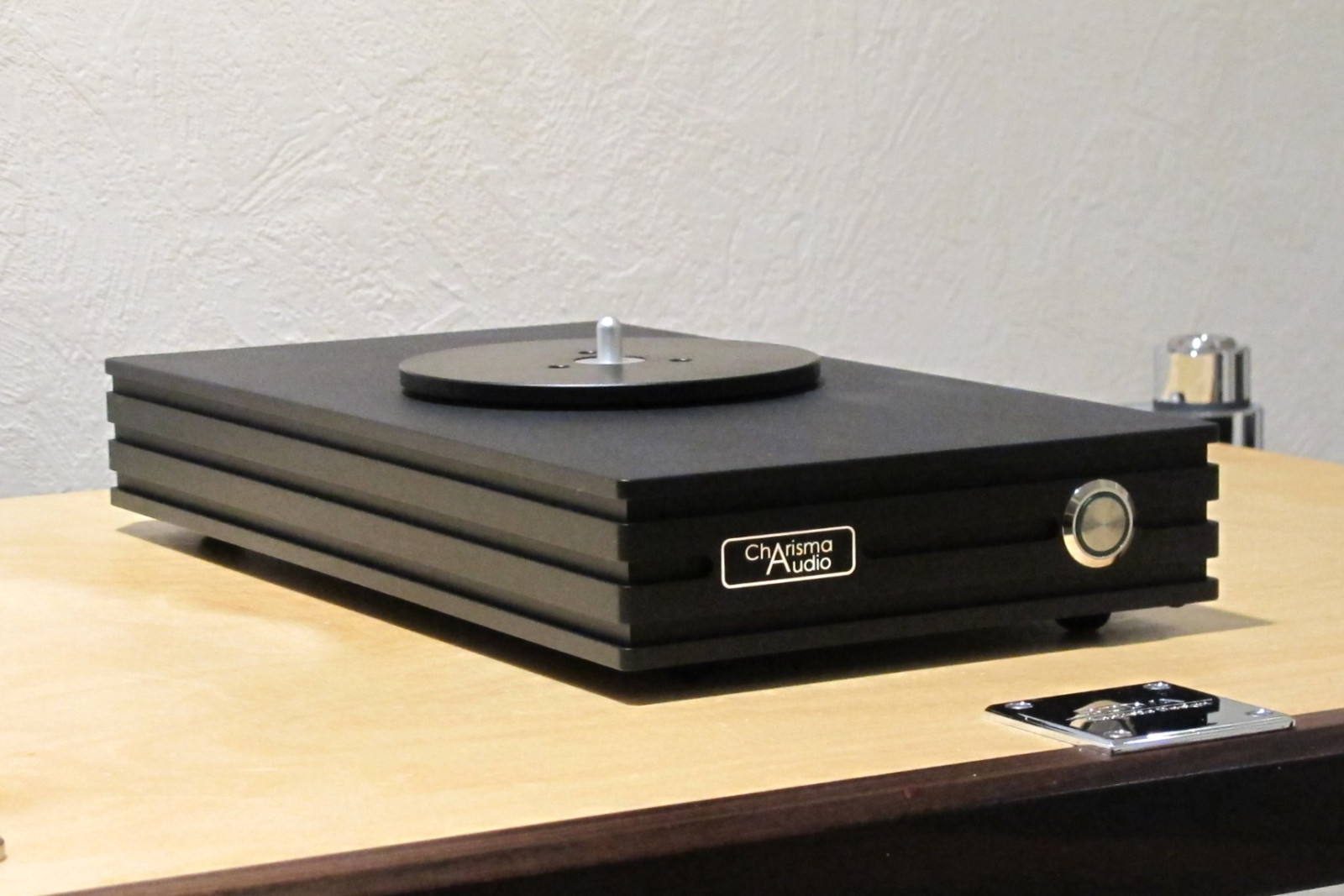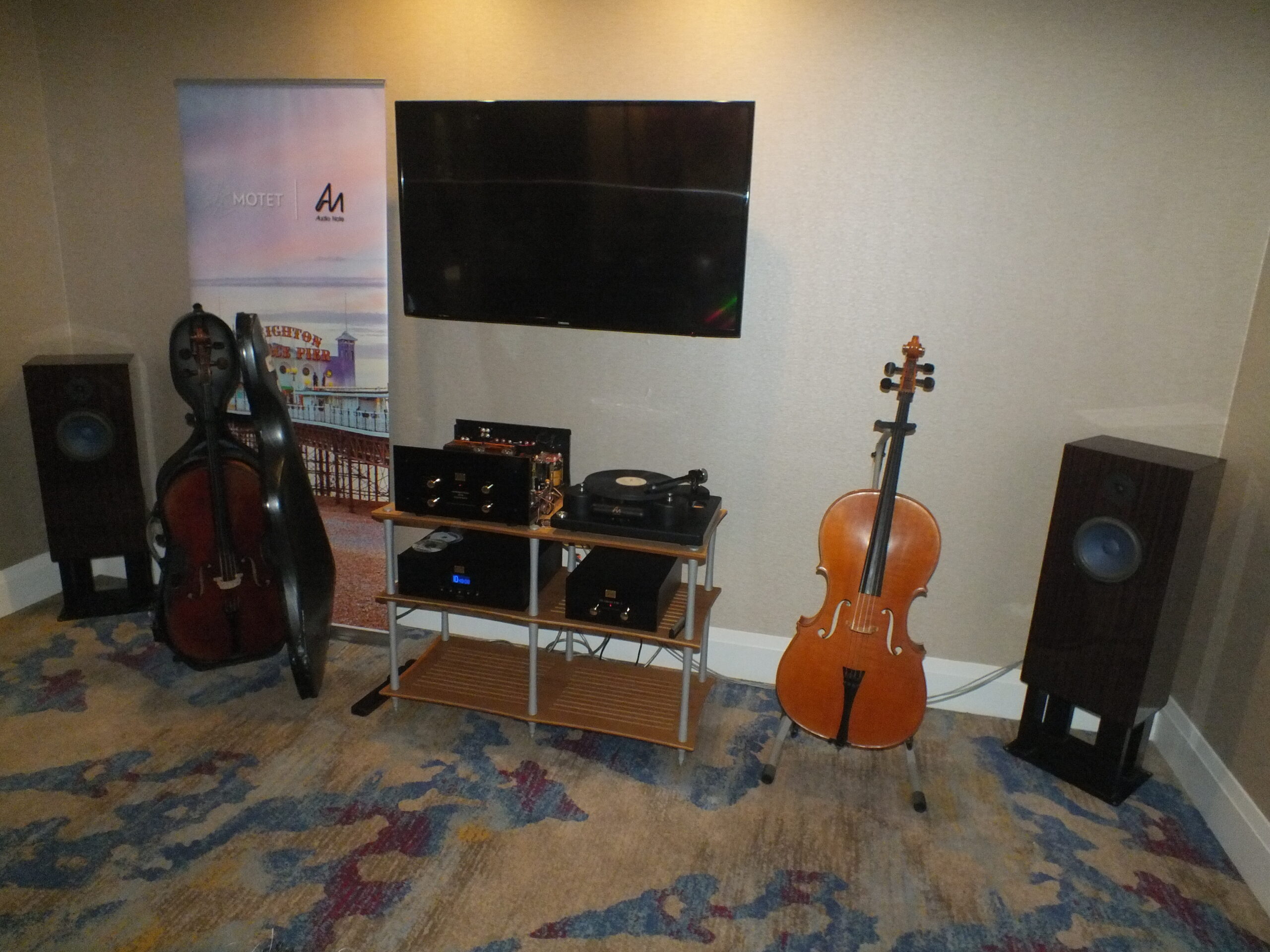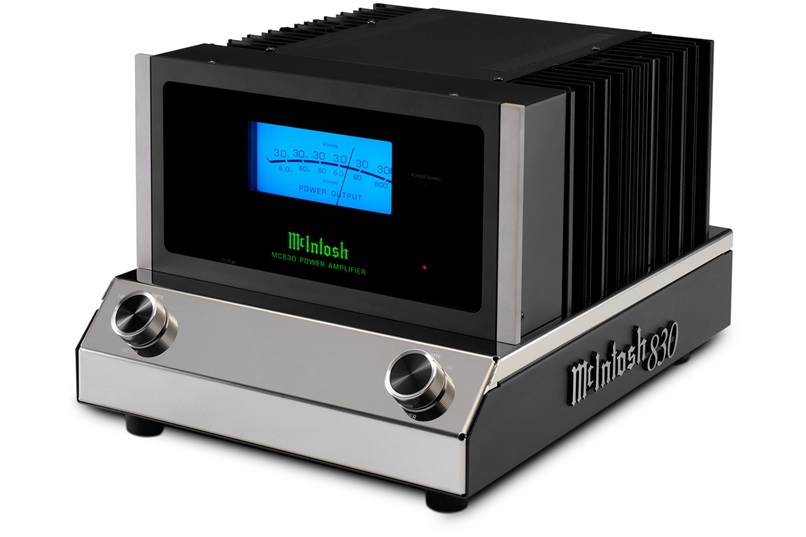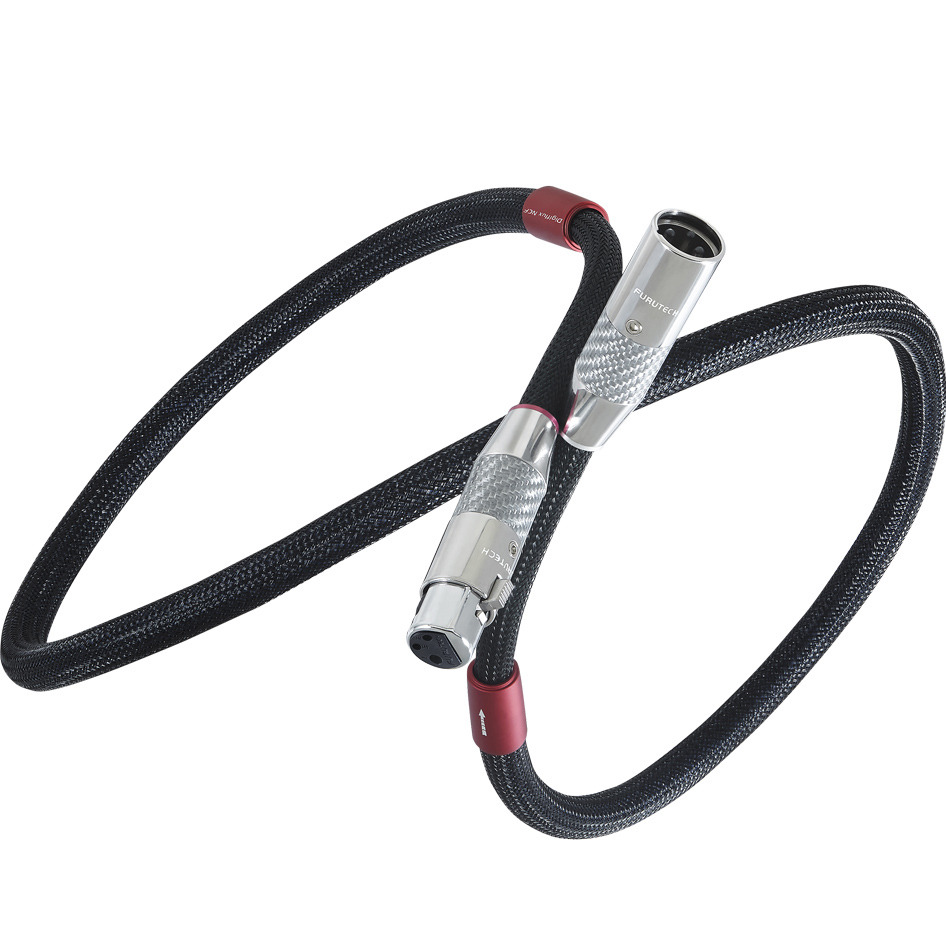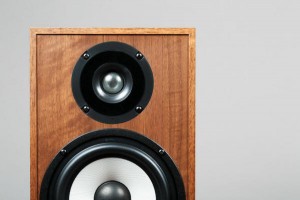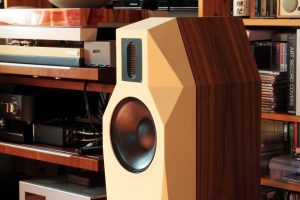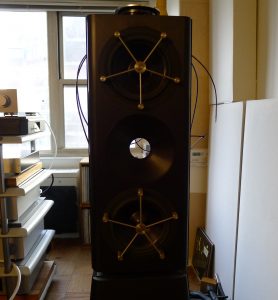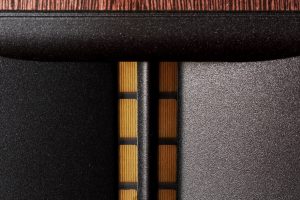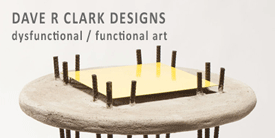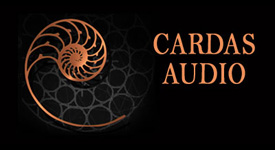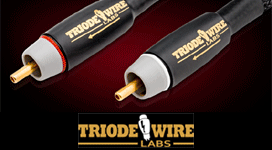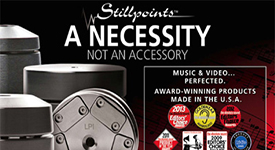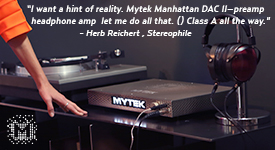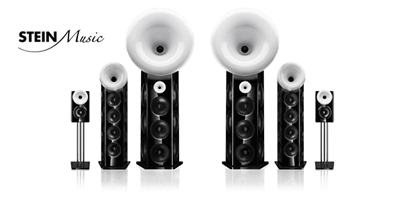So you want to travel back in time to the mid-1970s to buy a brand new (back then) 1975-era pair of Quad ESL-57 loudspeakers. Okay… I get it. The primary difficulty, of course, is that all of your efforts to build a time machine out of a Delorean have failed; completely and utterly failed. Is it a problem with the flux capacitor? Or maybe the timing circuits aren't "syncing" with the flux capacitor? You're not entirely sure what, specifically, isn't working(?). What is semi-certain is that without a time machine, you'll never get to hear the sweet and glorious mid-range sound of a vintage pair of ESL-57s. I used to have thoughts like this too. In retrospect, I was wrong.
Today, in 2025, when driven by a capable amplifier, a speaker does exist that sounds remarkably similar to a vintage ESL-57. Charisma Audio's™ Caprisse bookshelf speakers have the same glowing and glorious mid-range sound that Walker's little wonders created more than fifty… count 'em… 50 years ago. Accordingly, you can abandon the whole "I'm gonna build a time machine out of a 1974 AMC Matador" project thingy.
The Caprisse loudspeakers
The Caprisse is a diminutive 2-way standmount monitor with a cylindrical port installed in the rear. The front face of the speaker is racked back at a sloped angle. The top of the cabinet is also sloped downwards towards the rear. This design is intentional to avoid parallel cabinet walls. One speaker's dimensions are: 35cm (13.78") High, 18.5cm (7.28") Wide, and 28cm (11.02") Deep. Unboxed, each speaker weighs 28 Lbs.
Caprisse sans grills
The Caprisse mates a silk 20mm MC ring tweeter with a 13cm (5") mid-range/woofer. The tweeter is surrounded by a 2mm thick, star-shaped, acoustical foam diffraction device. The speakers come with dust covers that are easy to remove.
Star-shaped tweeter diffraction device
Charisma Audio describes the Caprisse's crossover network in this way:
"Multi-slope elliptical 'Transitional Transfer 0 Z' type (T20Z). The highest quality crossover components have been used (silver/gold capacitors and air-core coils). The crossover is optimized to take care of the 'Pinna' effect."
The silk MC ring tweeter is the most recent iteration of Lars Goeller's Italian-designed tweeter technology. Charisma claims that this tweeter creates deep resolution without the typical metallic colorations that other exotic metal-dome tweeters inherently generate.
The "skins" of the midrange driver are made out of nano-graphite fibers in a 3D alea structure matrix that Charisma calls a "HyperGraph." These skins are strengthened with vacuum/plasma deposited titanium surfaces. Bernard Li, CEO of Charisma, claims that this 3D-matrix is superior to traditional textile or woven driver structures.
Close-up of 5" midrange driver
The cone's fibers lay randomly in every possible direction (not in a simple weave pattern). Due to its cellular nature, the 5" cone is primarily made out of air. Even the most cynical audiophiles will agree that air doesn't weigh very much. The less that a driver's skin weighs, the easier it is to control its movements and generate accurate sound waves. The drive unit features a multi-element motor with a high acceleration factor and low compression.
Charisma recommends partnering the Caprisse up with their 26" tall Cabriolet (MSRP $1150 USD / $1580 CAD) three column loudspeaker stands. The speakers are available in a high-gloss polyester finish and they come in one color: gloss piano black.
Cabriolet 3-column stands
Bernard also recommends using high quality amplification in the 25 watt to 100 watt per channel range. The Caprisse only comes with one set of binding posts. This bookshelf monitor, therefore, isn't bi-wireable or bi-ampable.
The speaker's sensitivity is 87dB/2.83V/m. It has a nominal "non-critical" impedance of 4 to 8 Ohms. This forgiving impedance curve makes it a cinch to drive with a wide variety of quality amplifiers.
Today in 2025, many audiophiles live in small modern condominiums where space is limited. If you live in Tokyo, Singapore, Hong Kong, London UK, Paris, Toronto, New York, Miami, or any congested city where an 800 square foot condo is considered "spacious," the diminutive Caprisse may be exactly what you're looking for. This bookshelf speaker has been purposefully designed to create high quality sound within smaller rooms.
Set-up
Bernard Li recommends having the Caprisse set-up at least 1m (3.3 feet) inwards from the side walls and 0.5m (1.65 feet) out from the back wall within your listening room. As the Caprisse has a generous dispersion pattern, it's fairly easy to position the speakers. In my listening room, I found that toeing them in at about a 45° angle sounded best.
When properly set-up, ultra high-end bookshelf speakers are known for vanishing into a room. Top shelf 2-way monitors are also known for mid-range purity, jaw-dropping resolution, and precise imaging. The sonic character of the Caprisse fits these descriptions to a T.
The trade-off, (there's always a trade-off), is that small bookshelf monitors do not—indeed, cannot—create low bass slam. If you're looking for a pair of loudspeakers to fill a large open-concept room with booty-twerking bass, look elsewhere. One 20mm silk-dome tweeter and one 5" midrange/bass driver can only move so much air.
Would I recommend partnering these standmount speakers up with a pair of powered bass woofers? Perhaps…? It really comes down to an individual audiophile's needs/wants for low-end bass extension and specific room acoustics.
The Caprisse speakers and matching Cabriolet stands combo has strikingly attractive looks. These bookshelf monitors don't overpower a room like a massive floorstander (think of a pair of monstrous Magico M9 speakers). As such, it has a high visual factor of approval.
Initial Impressions
I burned the Caprisse speakers in for about 200 hours before doing any serious listening. Much like with Lowther™ drivers, I sense that the Caprisse's 5" midrange/woofers (probably) need a lot more burn-time before they'll let you hear what they're sonically capable of. Do not judge the sound quality of these speakers until you've run signal through them for a few weeks.
For perspective, I drove the Caprisse monitors with an assortment of amplifiers. These included:
1) The 40w/ch Assemblage ST-40 EL34 based tube amp.
2) The 480w/ch pair of McIntosh MC830 solid-state monoblock amps.
3) The 55w/ch Sonic Frontiers Power-1 amp with KT88 power tubes.
4) A pair of Bel Canto Design REF601M solid-state monoblocks.
5) A pair of Icon Audio MB-90 Mk#2 KT-150 tube monoblocks.
The Caprisse created highly transparent and polished sonics with all of these amps. To my ears, they sounded their best when driven by the two Icon Audio vacuum tube amplifiers. Much like Quad ESL-63s and 57s, the Caprisse created strikingly fast transients and deep resolution. Its harmonic scale, textured purity, and musical coherency are easy to fall in love with. They have a remarkable sonic purity in the midrange that consistently created shiver-inducing sonics.
Despite its small physical size, a pair of Caprisse speakers can play a lot louder than I thought they might. They are quite capable of filling a small to mid-sized room with loud music. Much like with electrostats, subwoofers (plural) will need to be fast to keep up with the Caprisse's impressive transient speed.
Listening Tests
Over the course of about two months, I tried a vast array of music. Whether I was listening to classic rock, jazz, rhythm and blues, or heavier music like doom metal, the Caprisse recreated my favorite albums with a midrange purity that I've rarely heard. Germane to their magic in the midrange, I found myself often choosing male and female vocalists for many of my listening sessions. Examples?
Neil Young, Decade
Neil Young's 3LP Decade (Reprise 2257) is a vibrant collection of his music from the 1970s. Young's desperate voice and wandering guitar lines are at the center of most of these tracks. On the song "The Old Laughing Lady," his gentle opening vocals have a euphoric quality. At the 3-minute mark, the grouped female vocals that come lapping into the soundstage gave me shivers.
The Caprisse let me hear into the soul of Young's songs. His unique voice wasn't reduced to background noise or distorted grocery store PA-system echoes that this type of gentle music can all-too-quickly become. I wasn't just listening to the surface anymore. Heck no. I was "seeing" into the recording and feeling emotionally lost inside of it.
Patricia Barber, Modern Cool
Released in 1998, Patricia Barber's Modern Cool (Premonition Records, PREM-741-2) is a landmark modern jazz album. Showcasing eclectic jazz songs, Barber's vocals and piano work on this album are legendary.
About 10 years ago, a fellow audiophile friend and I, (hey ho Renato!), once saw Miss Barber play in Toronto at an intimate jazz club called Hugh's Room™. Although she didn't have a full compliment of six or seven musicians on stage, her performance with one lad wrestling a stand-up bass knocked me to the moon.
Patricia didn't just "play" the piano. Nuh-uhh. Despite her diminutive size, she rode the damned thing like she was trying to make a baby with it. She had complete and total physical control of that piano. I walked out of the show with my jaw firmly dropped into my lap. At that time, in my humble opinion, she was the best jazz pianist/female vocalist on the planet. To this day, I've never seen any musician milk a piano for every last dripping ounce of its textured sound like that.
Listening to the tracks "Touch of Trash," "Light My Fire," and "Let it Rain" on a MoFi SACD version of Cool, my mind cart-wheeled right back to that live concert. In particular, the soul-moving way that the Caprisse monitors made the song "Postmodern Blues" sound made my heart shiver. If I closed my eyes, it was like Patricia Barber was in the room with me. The tone of her voice was strikingly honest. Hearing the recording sound so damned good became an emotionally stirring experience that transported me back to better times.
Conclusion
So you're trying to build a time machine out of a 1973 AMC Pacer. You want to time travel back to the mid-70s to hear the glorious midrange sound of an original pair of Quad ESL-57 loudspeakers. I hear ya. I get it. I have audiophile dreams like this too.
Then again, maybe you don't need to risk life, limb, and a whole lot of 88 mile-per-hour speeding tickets to get that midrange sound quality? Today, in the summer of 2025, a current-production bookshelf monitor exists that sounds remarkably similar to a vintage pair of ESL-57s. With decent tube amps driving them, Charisma Audio's Caprisse bookshelf speakers can deliver the same sonic quality and breathtaking midrange purity as Quad's legendary electrostats.
Down through the last 40 years, I've owned two pairs of Quad ESL-57s and three pairs of ESL-63s. The Caprisse reminds me—fondly—of a vintage pair of ESL-57s. It has lightning-fast transients, lifelike PRaT, and magic in the midrange. The genius of the Caprisse is that it doesn't need a large room to create the jaw-dropping sound quality of an old-school electrostatic floorstander.
If your listening room is small to mid-sized, do yourself a real favour and audition these speakers. It's far easier than trying to get a vintage Delorean up to 88 miles an hour.
The Caprisse Loudspeakers
Retail: $6200 USD / $8500 CAD)
Charisma Audio

